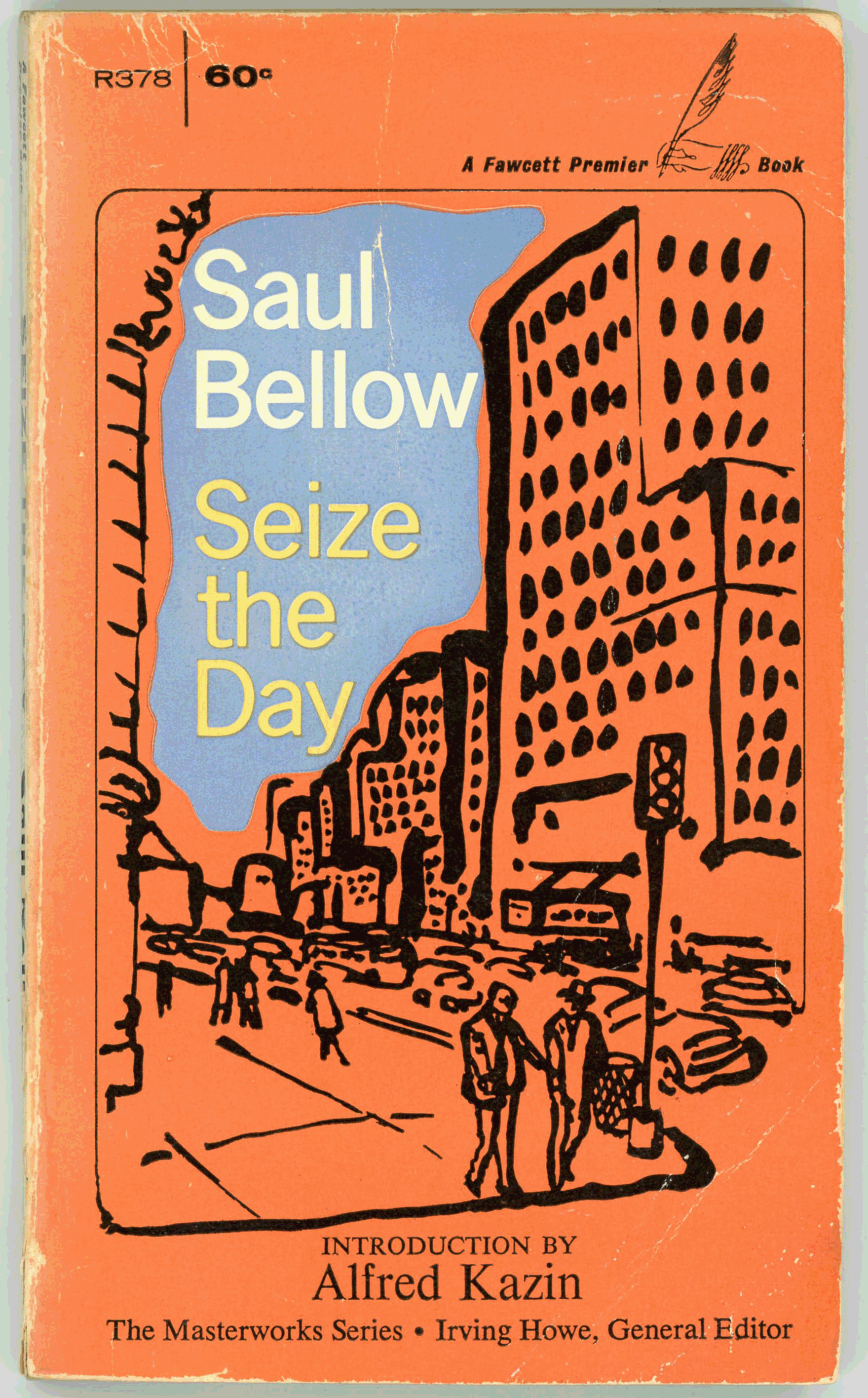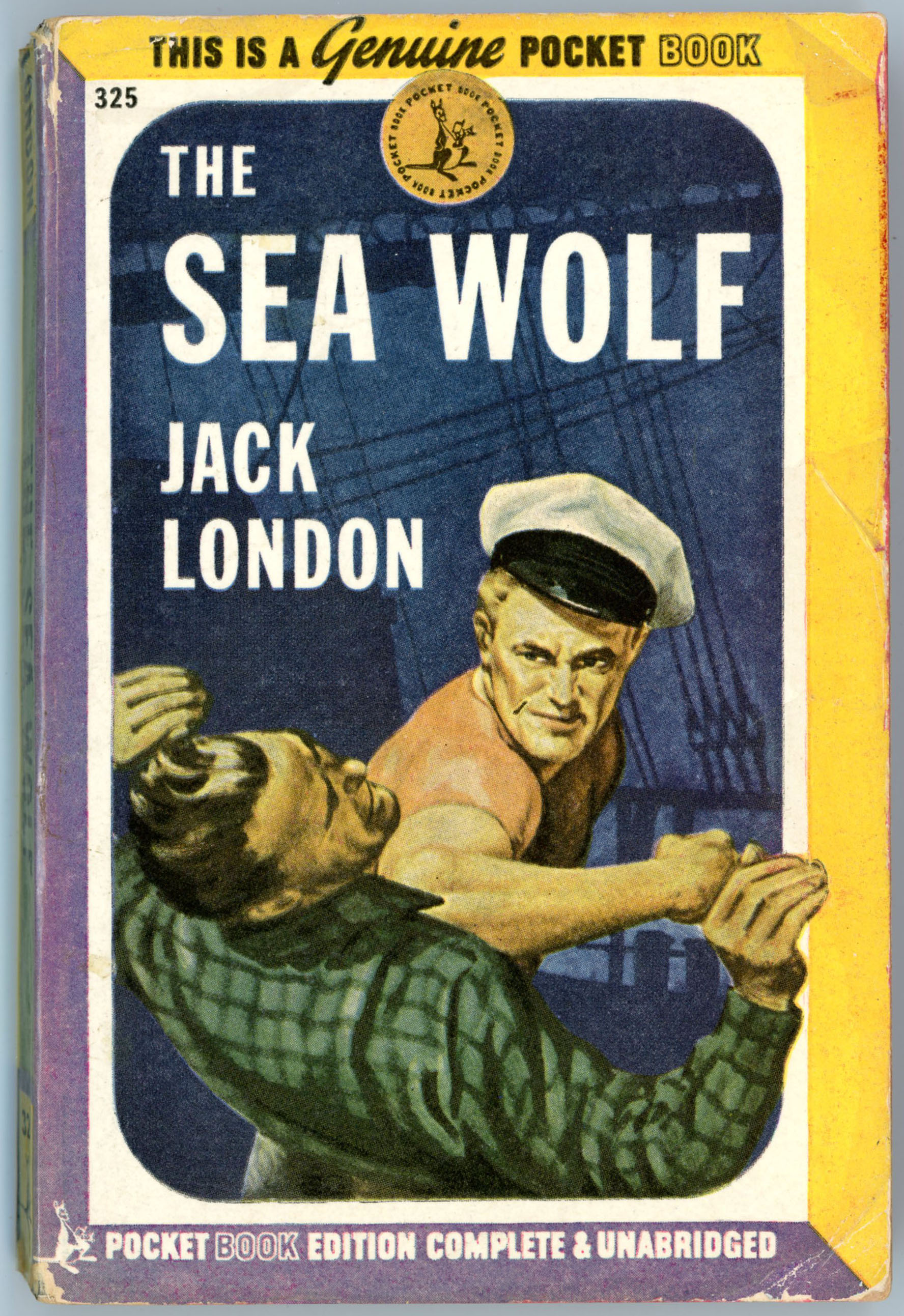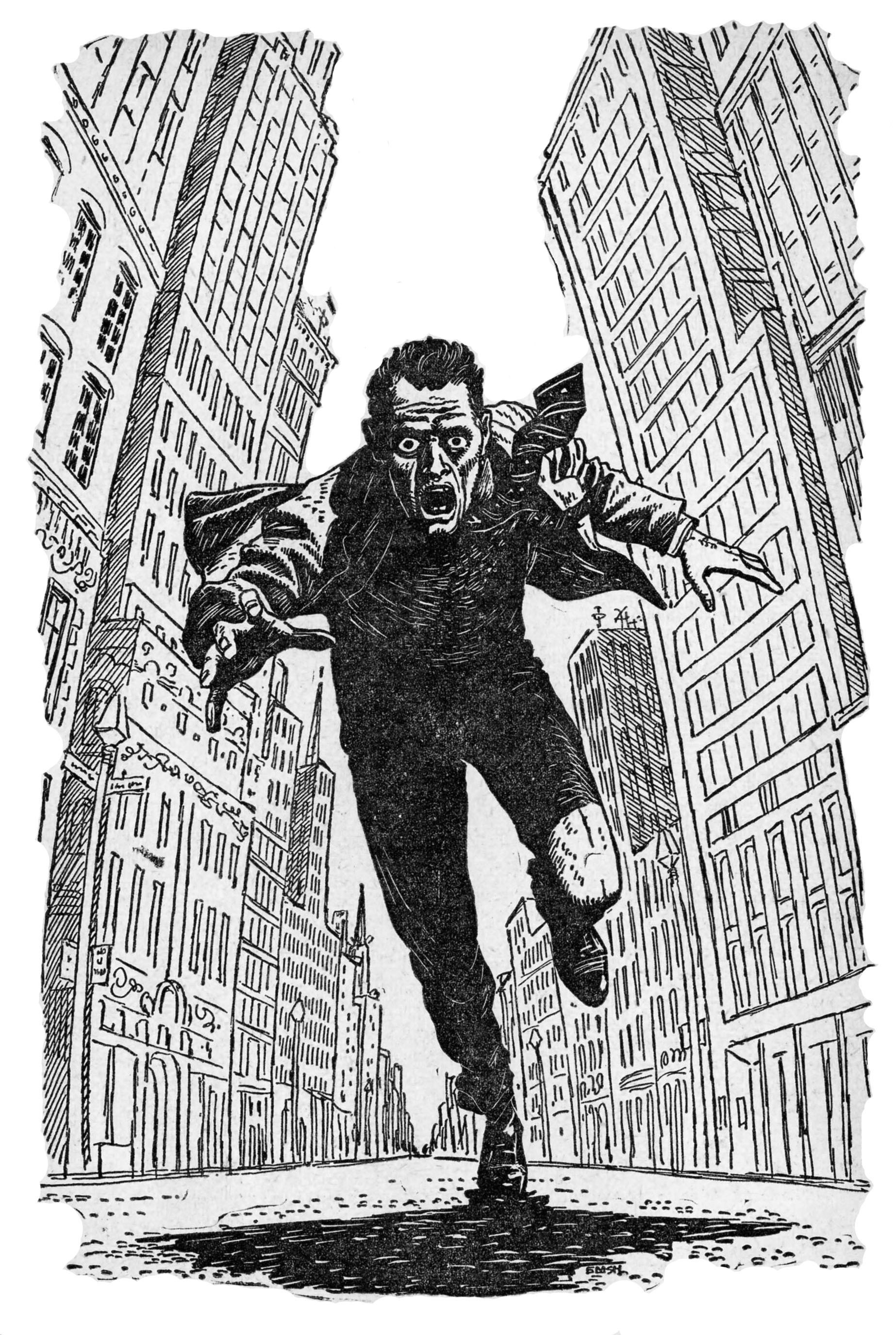While a number of my prior posts illustrate the work of Richard Powers,* his cover art for the 1954 Bantam Books edition of Fredric Brown’s Star Shine uniquely exemplifies his skill and versatility, to an extent not necessarily evident in his other compositions.
Specifically, Powers’ painting is composed of four elements.
First, the skyline of a futuristic city, composed of asymmetrical buildings, all finished in orange and pink, appears in the lower background. A World War One era biplane (well, it looks like a biplane!) incongruously floats above.
Second, a violet band covered with frivolous, indefinable curves – probably not representing anything at all! – of yellow, black, blue, and orange, occupies the center of the cover. Patterns like this are present in many of Powers’ compositions.
Third, a stylized lady – an upside-down-lady, at that!, holding a rose in her mouth – occupies the upper cover. (You can see her in greater detail by scrolling down a little.)
Fourth – and in the context of Powers’ work, most interestingly – the central element of the cover is the face of a very contemplative man. Neither stylized nor abstract (albeit greenish-blue!), this figure shows Powers’ skill in natural representation, which is not apparent in most of his science fiction illustrations.
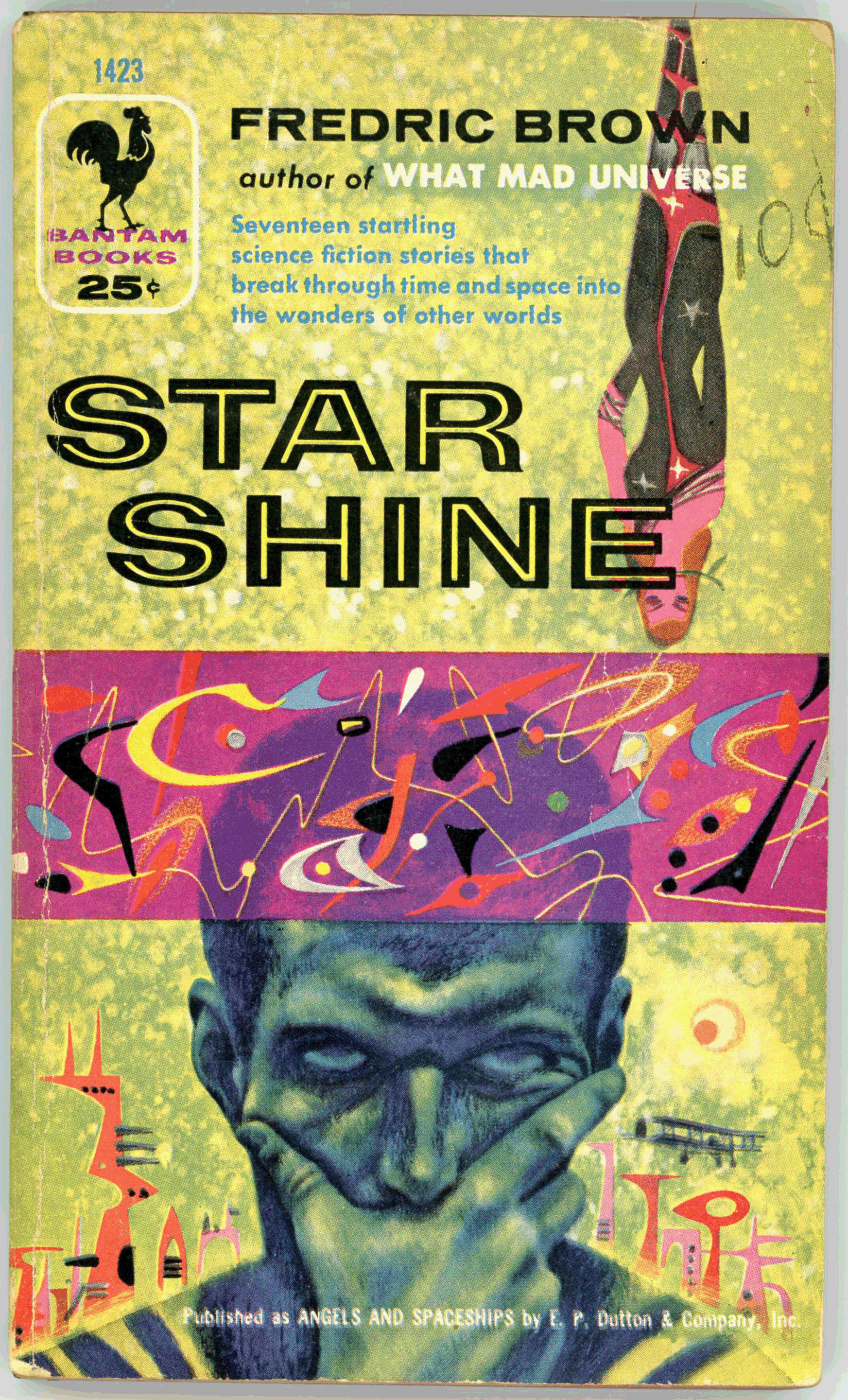 Contents
Contents
Pattern, from Angels and Spaceships (1954 anthology)
Placet Is a Crazy Place, from Astounding Science Fiction, May, 1946
Answer, from Angels and Spaceships
Etaion Shrdlu, from Unknown Worlds, February, 1942
Preposterous, from Angels and Spaceships
Armageddon, from Unknown Fantasy Fiction, August, 1941
Politeness, from Angels and Spaceships
The Waveries, from Astounding Science Fiction, January, 1945
Reconciliation, from Angels and Spaceships
The Hat Trick, from Unknown Worlds, February, 1943
Search, from Angels and Spaceships
Letter To a Phoenix, from Astounding Science Fiction, August, 1949
Daisies, from Angels and Spaceships
The Angelic Angleworm, from Unknown Worlds, February, 1943
Sentence, from Angels and Spaceships
The Yehudi Principle, from Astounding Science Fiction, May, 1944
Solipsist, from Angels and Spaceships
______________________________
The Mural
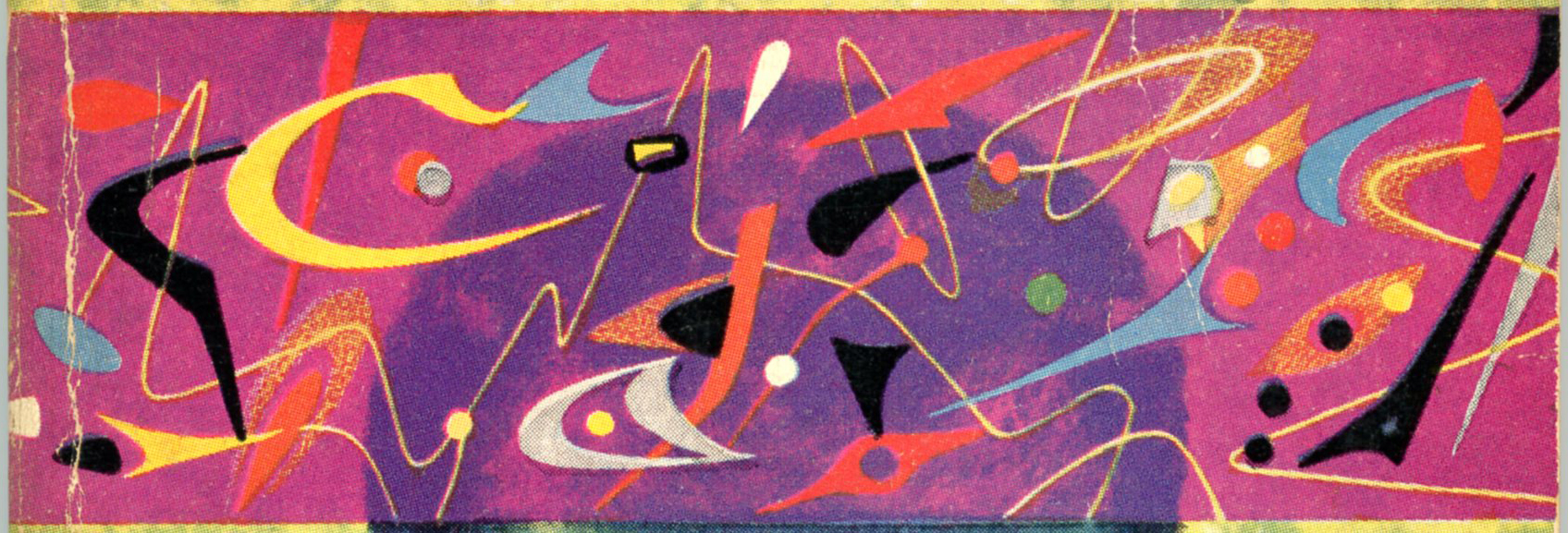 ______________________________
______________________________
The Upside-Down-Lady
 * With more to follow in future posts…
* With more to follow in future posts…
 Roy Ellsworth, who created cover art for the 1977 edition of Mr. Sammler’s Planet, and the 1983 release of Henderson the Rain King, was also the artist for the 1985 publication of Seize the Day – all authored by Saul Bellow; all published by Penguin Books.
Roy Ellsworth, who created cover art for the 1977 edition of Mr. Sammler’s Planet, and the 1983 release of Henderson the Rain King, was also the artist for the 1985 publication of Seize the Day – all authored by Saul Bellow; all published by Penguin Books. 


